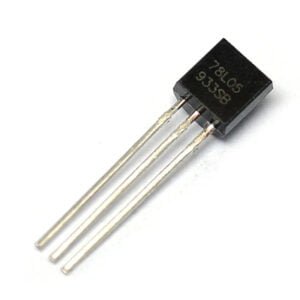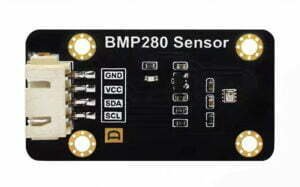Are you tired of experiencing unexpected malfunctions and damage to your valuable electronic devices? Whether you’re a tech enthusiast or a professional working with electronic equipment, protecting your devices from Electrostatic Discharge (ESD) is crucial. ESD can cause irreparable damage to sensitive components, leading to costly repairs or even complete device failure. But fear not! In this guide, we will provide you with the essential ESD protection tips to safeguard your electronics. From understanding the basics of ESD to implementing effective prevention strategies, we’ll cover it all. So, if you’re ready to shield your devices from the hidden dangers of ESD and ensure their longevity, let’s dive right in and discover how you can become the ultimate protector of your electronics!
What is ESD and why is it important?
Electrostatic Discharge (ESD) is the sudden flow of electricity between two electrically charged objects. It occurs when there is an imbalance of electric charge between the objects, resulting in a rapid transfer of electrons. ESD can happen when you touch or move electronic devices, or when objects come into contact with each other. It may not be visible to the naked eye, but it can cause serious damage to electronic components.
Understanding the risks of ESD damage is crucial to realizing the importance of ESD protection. When an electronic device is exposed to ESD, the discharge can disrupt the delicate circuitry inside, leading to malfunctions, data loss, or even permanent damage. ESD damage may not be immediately apparent, but it can gradually degrade the performance and lifespan of your electronics. Therefore, taking proactive measures to protect your devices from ESD is essential to ensure their optimal functioning and longevity.
Tips for creating an ESD-safe environment
Creating an ESD-safe environment is the first step towards safeguarding your electronics. Here are some tips to help you establish an environment that minimizes the risks of ESD:
- Control humidity levels: Maintaining a suitable humidity level (around 40-60%) helps dissipate static charges and reduces the likelihood of ESD. Use humidifiers or dehumidifiers to control humidity in your workspace or storage areas.
- Eliminate static generating materials: Avoid using materials that generate static electricity, such as plastic or synthetic fabrics, when handling electronic devices. Opt for ESD-safe materials, such as antistatic mats or garments, to minimize the risk of ESD.
- Establish ESD protective workstations: Set up dedicated workstations with ESD-safe surfaces and grounding. Use antistatic mats and wrist straps to prevent the buildup and discharge of static electricity. These workstations should be equipped with proper grounding connections to redirect any potential ESD safely.
By following these tips, you can create an environment that reduces the chances of ESD and ensures a safer working or storage space for your electronics.
Using ESD protection equipment and tools
To enhance the level of protection against ESD, utilizing appropriate ESD protection equipment and tools is crucial. Here are some essential items to consider:
- Antistatic wrist straps: Wrist straps are worn to prevent static charges from accumulating on your body and discharging into your electronic devices. They are connected to a grounding point and should be used whenever handling sensitive components or working on electronic assemblies.
- Antistatic gloves: Antistatic gloves provide an additional layer of protection by reducing direct contact between your skin and electronic devices. They minimize the transfer of static charges and protect against accidental ESD damage.
- Antistatic bags and containers: When storing or transporting electronic devices, it’s important to use antistatic bags or containers. These specialized packaging materials prevent the buildup of static charges and shield your devices from potential ESD during handling or shipping.
- ESD-safe tools and equipment: Use ESD-safe tools, such as screwdrivers and tweezers, which are made from materials that dissipate static charges. These tools minimize the risk of ESD damage when working with sensitive electronic components.
By utilizing appropriate ESD protection equipment and tools, you can significantly reduce the chances of ESD-related damage to your electronic devices. Remember to always follow the manufacturer’s guidelines for using and maintaining these tools.
Proper handling and storage of electronic devices
Proper handling and storage of electronic devices play a crucial role in protecting them from ESD. Here are some important guidelines to follow:
- Avoid direct contact with electronic components: When handling electronic devices, avoid touching the sensitive components directly. Hold them by their edges or use antistatic gloves to minimize the risk of ESD.
- Ground yourself before handling: Before working on electronic devices, make sure to ground yourself properly. Use an antistatic wrist strap and connect it to a grounding point, such as an ESD mat or grounded outlet. This will help discharge any accumulated static charges from your body.
- Store devices in antistatic packaging: When not in use, ensure that your electronic devices are stored in antistatic bags or containers. These protective enclosures prevent static charges from building up and shield the devices from potential ESD damage.
- Avoid working in dry environments: Dry environments increase the risk of ESD. If possible, work in areas with controlled humidity levels or use humidifiers to maintain an optimal level of moisture. This helps dissipate static charges and reduces the chances of ESD.
By following these guidelines, you can minimize the risks of ESD damage during the handling and storage of your electronic devices, ensuring their longevity and optimal performance.
ESD protection for different types of electronics
Different types of electronics require specific ESD protection measures. Here are some considerations for various electronic devices:
- Computers and laptops: When working on computers or laptops, ensure that the power is turned off and disconnected before touching any internal components. Use an antistatic wrist strap and handle components by their edges to prevent ESD damage.
- Printed Circuit Boards (PCBs): PCBs are highly sensitive to ESD. Handle them with care and avoid touching the circuitry directly. Use an antistatic mat or work on a grounded surface when assembling or repairing PCBs.
- Mobile devices and smartphones: When servicing or repairing mobile devices, follow the manufacturer’s guidelines and use ESD-safe tools. Be cautious when removing or inserting connectors to avoid ESD damage to the delicate components.
- Semiconductor devices: Semiconductor devices, such as microcontrollers or integrated circuits, are highly susceptible to ESD. Always handle them in an ESD-protected environment and use appropriate ESD-safe tools and equipment.
Understanding the specific ESD protection requirements for different types of electronics is crucial to ensure their safety and prevent potential damage. Always refer to the manufacturer’s guidelines and specifications for additional recommendations.
Best practices for grounding and bonding
Grounding and bonding are essential practices in ESD protection. Here are some best practices to follow:
- Proper grounding of equipment: Ensure that electronic equipment, such as workstations or testing instruments, are properly grounded. This helps divert any potential ESD safely and prevents the buildup of static charges.
- Grounding of personnel: Implement a grounding system for personnel working with electronics. This includes using antistatic wrist straps, heel straps, or ESD shoes that are connected to a grounding point. Regularly test the grounding system to ensure its effectiveness.
- Bonding of conductive materials: Bonding conductive materials together helps equalize their charges and prevents potential ESD between them. Use conductive mats or grounding straps to bond work surfaces, shelves, or storage racks.
By following these grounding and bonding best practices, you can minimize the risks of ESD and maintain an ESD-safe environment for your electronics.
Training and education on ESD protection
Providing proper training and education on ESD protection is essential for everyone working with electronic devices. Here’s why it matters:
- Awareness of ESD risks: Educating individuals about the risks and consequences of ESD helps them understand the importance of ESD protection. This awareness encourages responsible and careful handling of electronic devices.
- Proper handling techniques: Training individuals on proper handling techniques and ESD protection measures ensures that they follow industry best practices. This helps minimize the chances of ESD-related damage and promotes a culture of safety.
- Regular updates and refresher courses: ESD protection techniques and technologies evolve over time. Conduct regular updates and refresher courses to keep individuals informed about the latest trends and practices in ESD protection.
Investing in training and education on ESD protection not only improves the safety and reliability of electronic devices but also fosters a proactive approach towards ESD prevention within your organization.
Common Myths about ESD
There are several common myths surrounding ESD. Let’s see a few of them:
- Myth 1: ESD only occurs in dry environments: While dry environments increase the risk of ESD, it can occur in any environment. Moisture levels, humidity, and other factors can influence the likelihood and severity of ESD.
- Myth 2: ESD is only a concern for electronic manufacturers: ESD is a risk for anyone handling electronic devices, regardless of their industry or role. It’s important to take ESD protection seriously to avoid potential damage to your valuable electronics.
- Myth 3: ESD damage is immediately visible: ESD damage may not be immediately apparent. It can cause latent failures, which means the damage may occur over time and become noticeable at a later stage.
By debunking these myths, you can have a better understanding of the risks associated with ESD and take appropriate measures to protect your electronics.
Conclusion
Electrostatic Discharge (ESD) poses a significant threat to the performance and longevity of electronic devices. The consequences of ESD damage can range from minor malfunctions to complete device failure, leading to costly repairs or replacements. By implementing the basic ESD protection tips covered in this guide, you can significantly reduce the risks of ESD-related damage and enhance the lifespan of your electronics.





